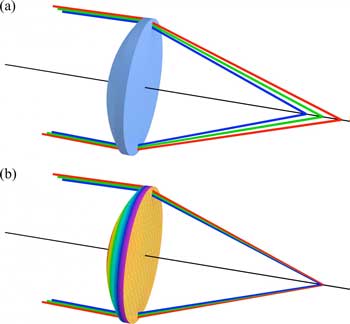
Friday, February 9, 2018
Metasurfaces enable improved optical lens performance
Producing the perfect color images we need and love often requires multiple, heavy lenses so that each color focuses in exactly the same plane. Now engineers have developed a new theory that solves the problem using a single thin lens comprised of gradient index materials and metasurface layers to properly direct the light.
Stacking on the graphene
Researchers have fabricated two types of trilayer graphene with different electrical properties.
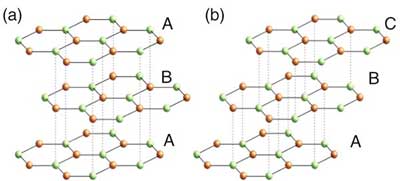
Water-soluble warped nanographene and its application for photo-induced cell death
Researchers have introduced 'warped nanographene', which is soluble in a broad range of solvents while maintaining its photophysical properties.
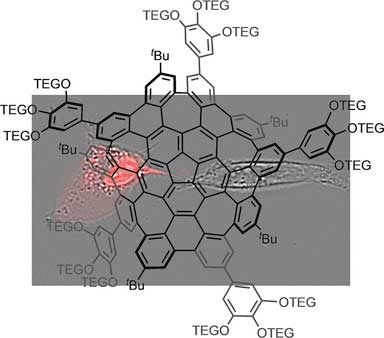
Few-layer tellurium as a promising successor of black phosphorus
Scientists have theoretically predicted few-layer alpha-Tellurium to be a promising elementary semiconductor with extremely high carrier mobility, layer-tunable bandgap, strong light absorption, large strength and good environmental stability.
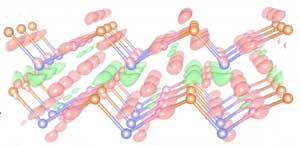
A super resolution view of chemical reactions
Researchers have demonstrated, using a super resolution microscopic technique, how to follow chemical reactions taking place in very small volumes. The method of analysis is the first to make it potentially possible to observe reactions not only inside living cells, but even within individual organelles, such as cell nuclei.
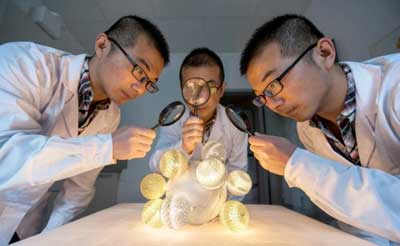
Your gadget's next power supply? Your body
Gold tab attached to skin converts mechanical energy into juice for wearables, self-powered electronics.
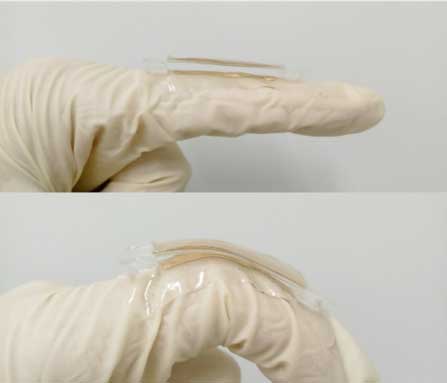
Antibacterial applications of graphene oxides
Nano-antibacterial agents represent a novel strategy for bacterial killing.

Innovative antimicrobial adhesive films to reduce infection risk in hospitals
In the framework of the European project FLEXPOL, researchers are designing formulations with antimicrobial properties from essential oils.

Acoustic nanomotors
Active delivery of Cas9-sgRNA complex in the cell by using ultrasound-propelled nanomotors.
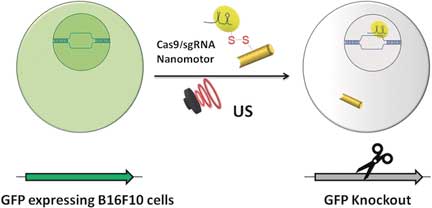
Ultra-efficient removal of carbon monoxide using gold nanoparticles on a molecular support
New method and mechanism for state-of-the-art gas purification.
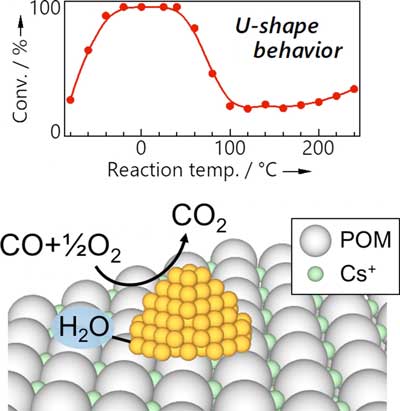
Mass production of new class of carbon nanotube semiconductors closer to reality
Chemists have found a way to simultaneously control the orientation and select the size of single-walled carbon nanotubes deposited on a surface.
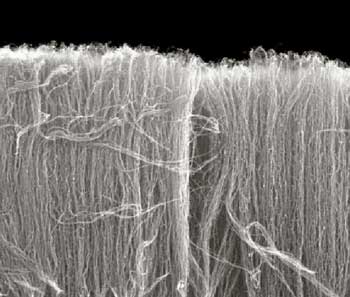
Subscribe to:
Comments (Atom)
